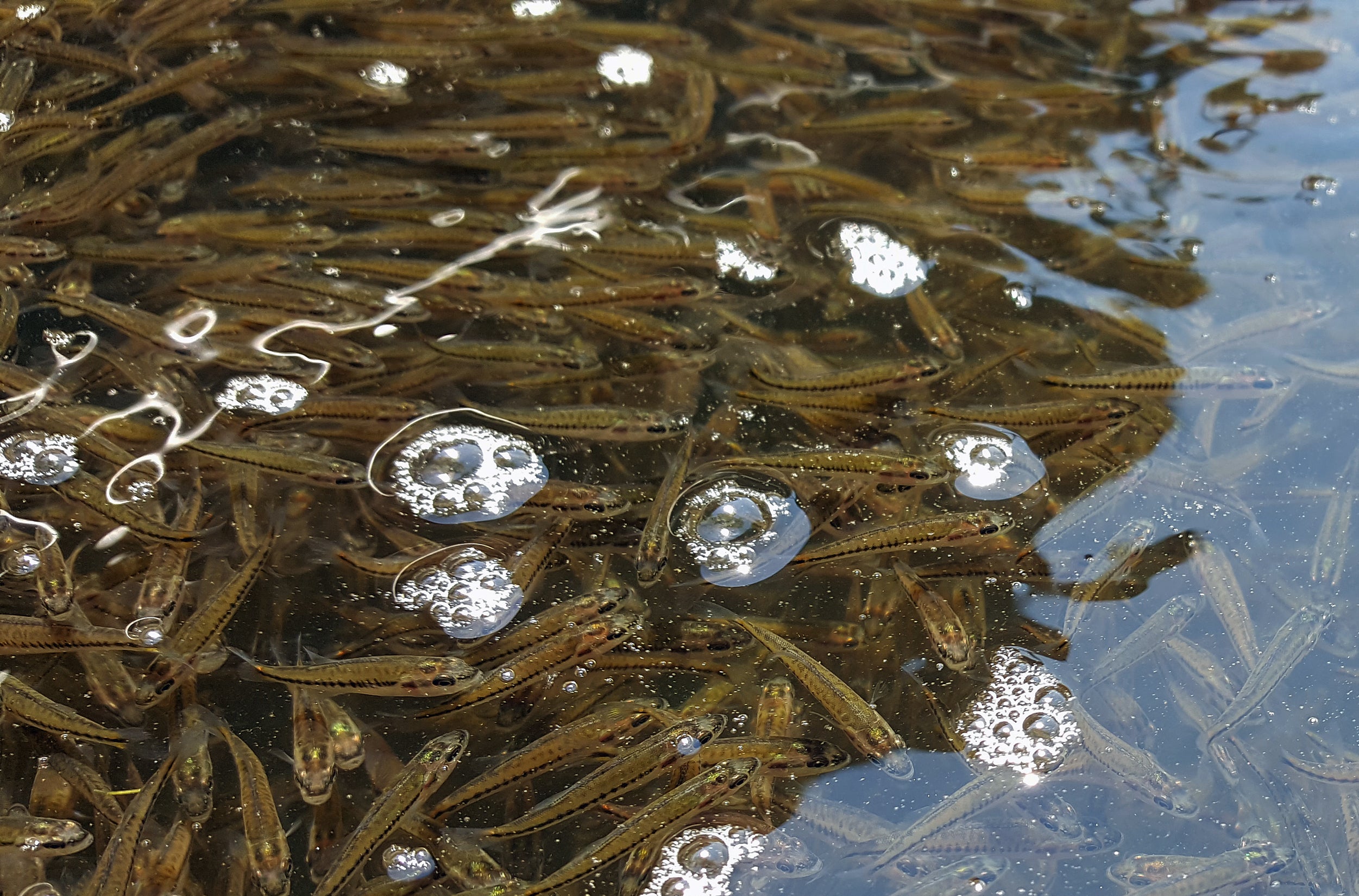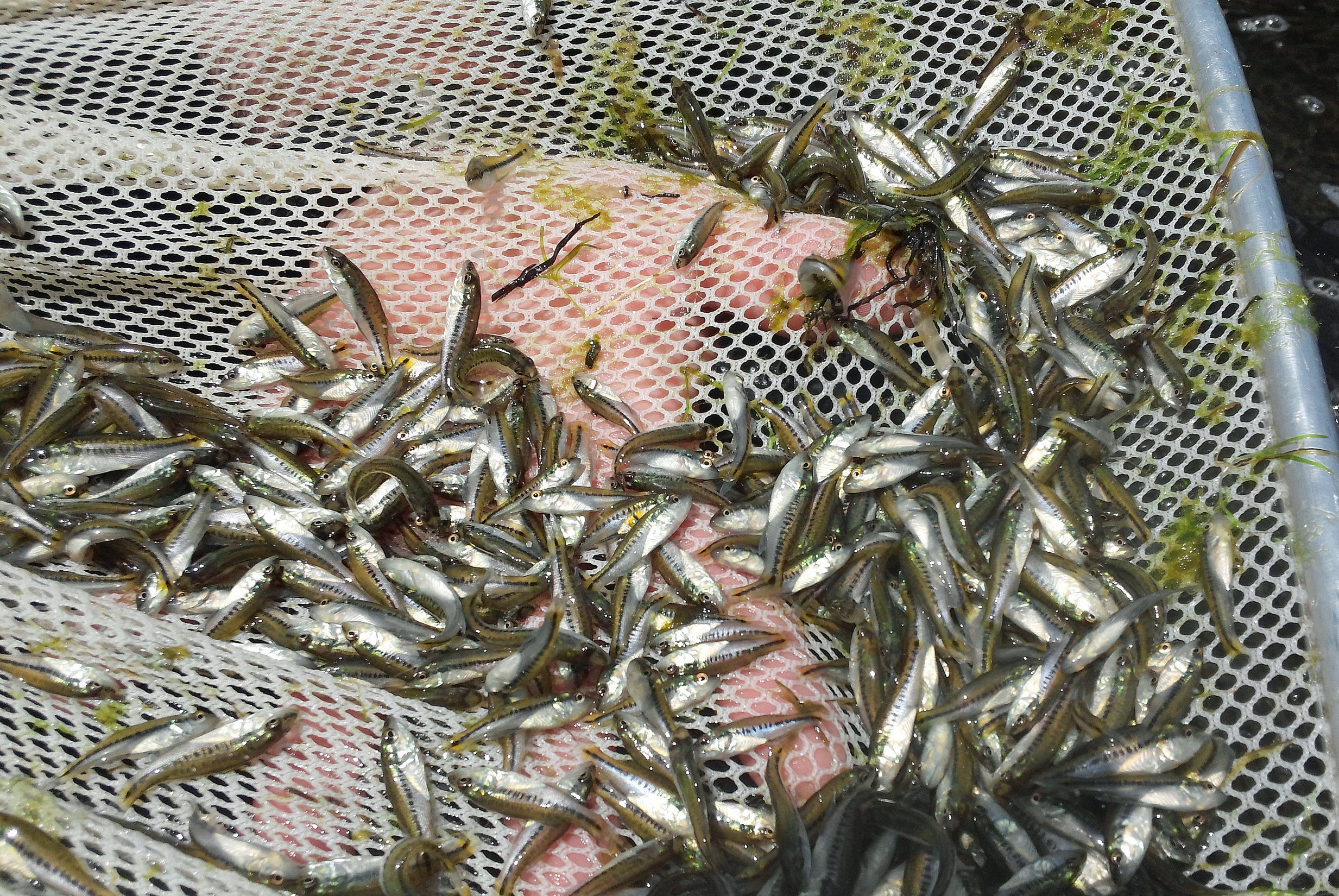By DAVID RAINER, Alabama Department of Conservation and Natural Resources
One thing you will never find is a bass angler who is happy with catching medium-sized fish. It is always bigger is better. That has been the strategy for the Alabama Wildlife and Freshwater Fisheries (WFF) Division for decades.
One method to achieve a larger bass is to introduce different genetic traits into the population. That was what occurred recently when Lake Jordan received its final stocking of Florida bass fingerlings.
The WFF’s Fisheries Section took the bulk of the Florida bass production from the Marion and Eastaboga hatcheries and stocked the fingerlings into Lake Jordan, a Coosa River impoundment.
“This is the third year where we have undertaken a concentrated stocking of Florida bass in Jordan,” said Fisheries Chief Nick Nichols. “Those stockings took place in the Bouldin impoundment. Those three years of stockings at Jordan is just a continuation of a stocking strategy that has gone on since the early 1990s.”
That strategy is to stock as many bass as the hatcheries can produce in a given time frame into a single area of a single reservoir.
“The goal of that is not to increase the number of largemouth bass in the lake,” Nichols said. “It’s simply an effort to introduce Florida bass genetic material into that lake’s native bass population. We’ve been doing this in reservoirs since the 1990s.
“We first attempted this at Lake Guntersville. We stocked Florida bass in two or three distinct locations in the lake. Guntersville had what we consider a true northern bass population. It’s on the Tennessee River above the shoals. Even though we stocked fewer fish at Guntersville during that time, the stocking of Florida bass on top of the native northern bass was actually more effective. We were introducing a different set of genes into that population.”
The result was the stocking efforts shifted the Guntersville bass from a pure northern bass to an integrated population with Florida bass traits. Later studies indicated that about 30 percent of the Guntersville bass population’s genetic material came from the introduced Florida bass.
“This showed that the stocking was successful, and it had some performance enhancement on the fishery,” Nichols said.
Fisheries biologists introduce Florida bass into a population in areas where that subspecies will thrive, mainly the warmer waters of the South and Southwest. Florida bass traits enhance performance, which means larger numbers of trophy bass are being caught with a larger average size.
“Florida bass are known to live a little longer, and they have the genetic propensity to grow to a larger size,” Nichols said. “They don’t necessarily grow faster, but they do seem to live longer, which allows them to grow to a larger size. However, what has been observed in situations where Florida bass have been stocked on top of northern bass is you get, at least temporarily, a population-wide hybrid vigor. Hybrid vigor is when you cross two closely related species and the offspring outperform the parents. We saw some of that in Guntersville. They’re seeing the same thing at Chickamauga in Tennessee.
“The downside is that once you’ve introduced that new genetic material into the population and you’ve gotten that initial hybridization response, you really can’t recreate that result again. In other words, you can’t go in with another Florida bass stocking and expect to get the same response you did with the initial stocking.”
Nichols said several years ago the Mobile River basin received several Florida bass stockings, but the results were noticeably muted compared to Guntersville.
“It gets more complicated,” he said. “As we learn more about the genetics of the native bass in Alabama, it’s become very apparent that the native bass in the Mobile basin naturally have a lot of the same genetic material as Florida bass. They aren’t necessarily Florida bass, but they share a lot of the same genome. We haven’t seen the same responses in the Mobile basin that we saw at Guntersville.”
Farther up the Coosa River, WFF had significant success with Florida bass stockings at Lay Lake several years ago.
“We were able to shift the population at Lay Lake to nearly a 50-percent Florida bass population,” Nichols said.
Florida bass introductions have been conducted at lakes throughout Alabama, including Wheeler, Lewis Smith, Martin, Logan Martin, Demopolis and Aliceville.
“We’ve had mixed results,” Nichols said. “In some of those places, we’ve been back to reevaluate the population post-stocking to see if there have been shifts in the allele (genetic) frequencies. Even cases where we have seen shifts, we haven’t seen the performance boost we saw at Guntersville. It’s not the dramatic difference that a lot of people think. Depending on the selective pressures in a body of water, you may not even see a response.”








